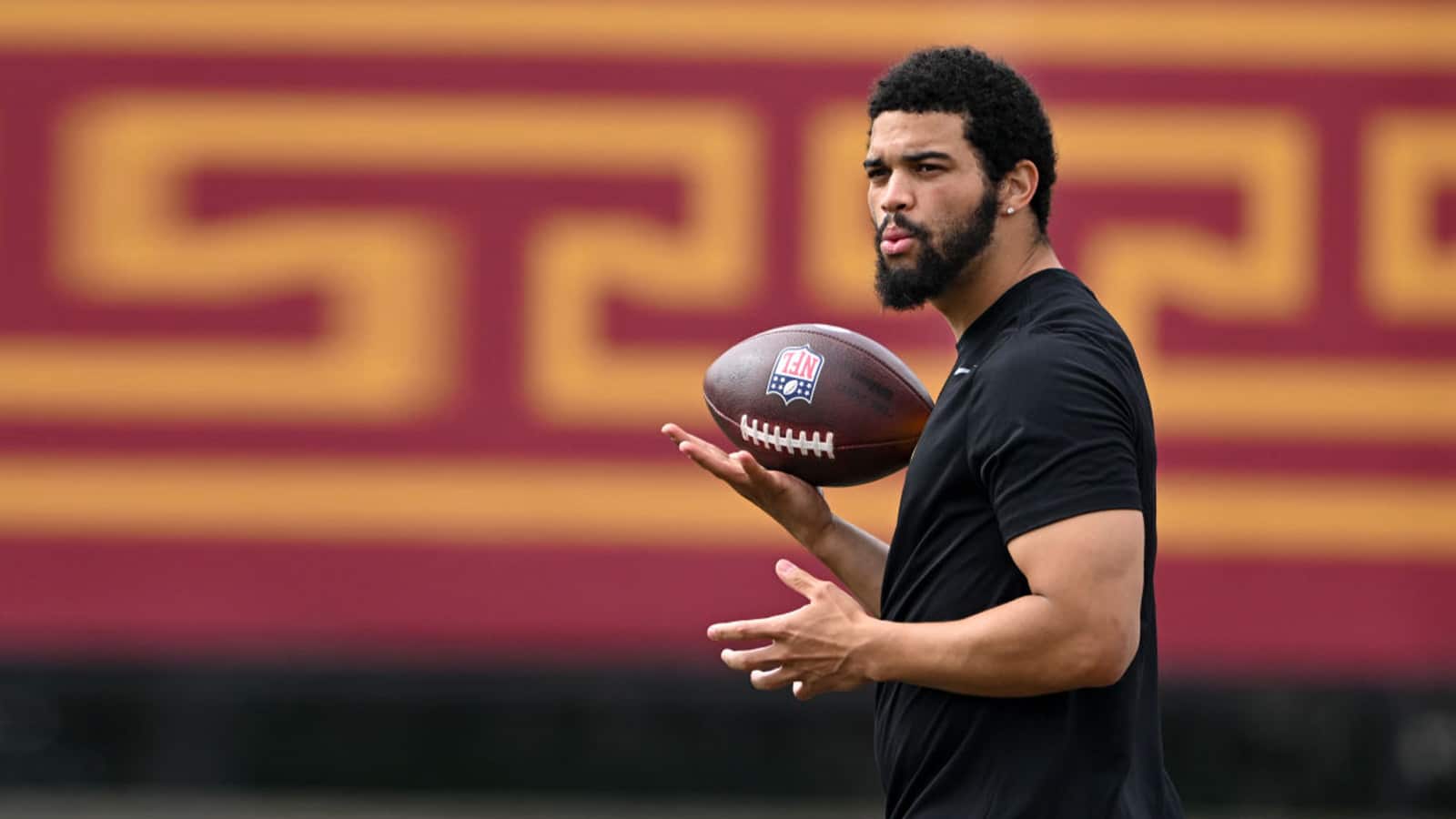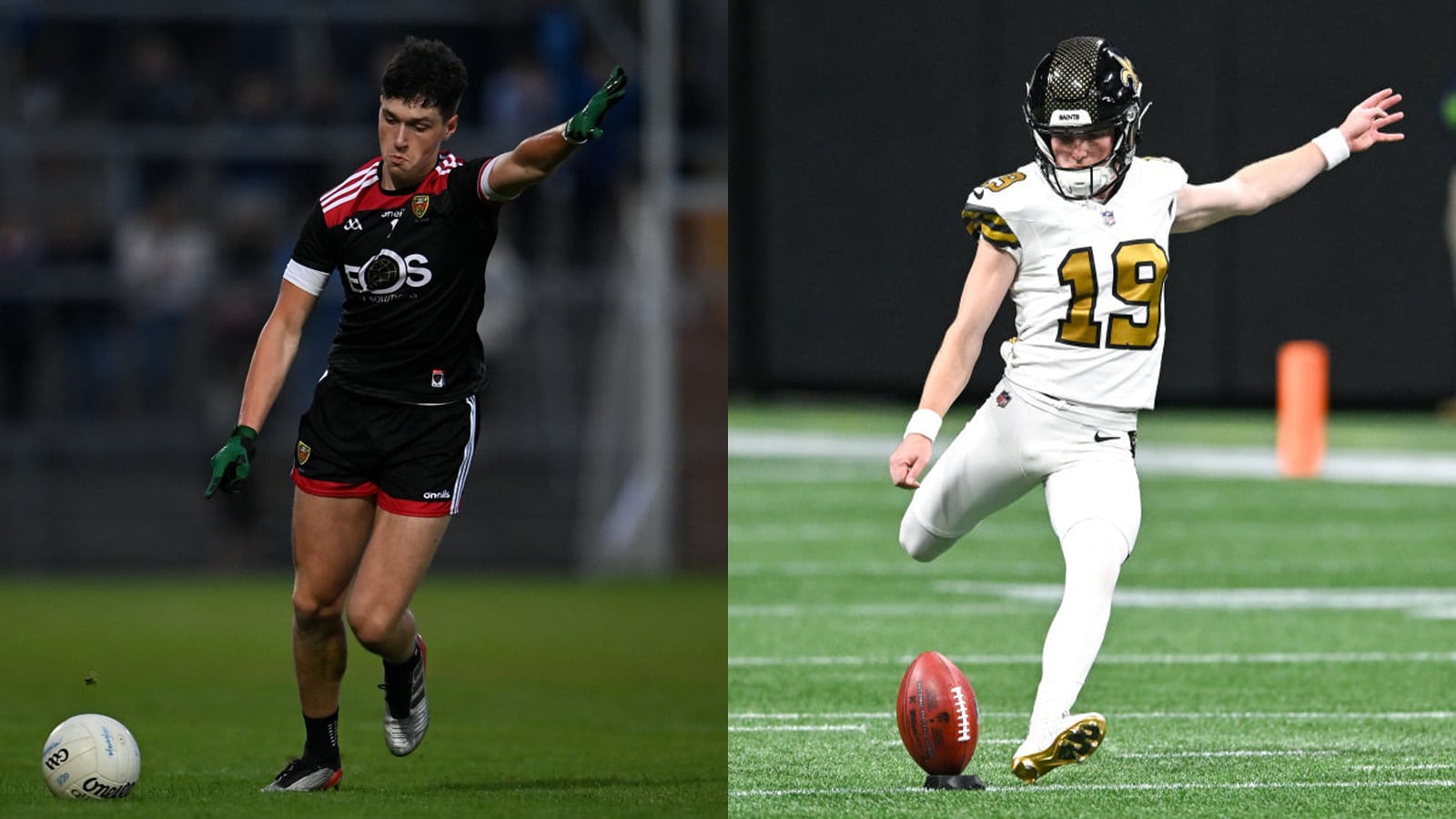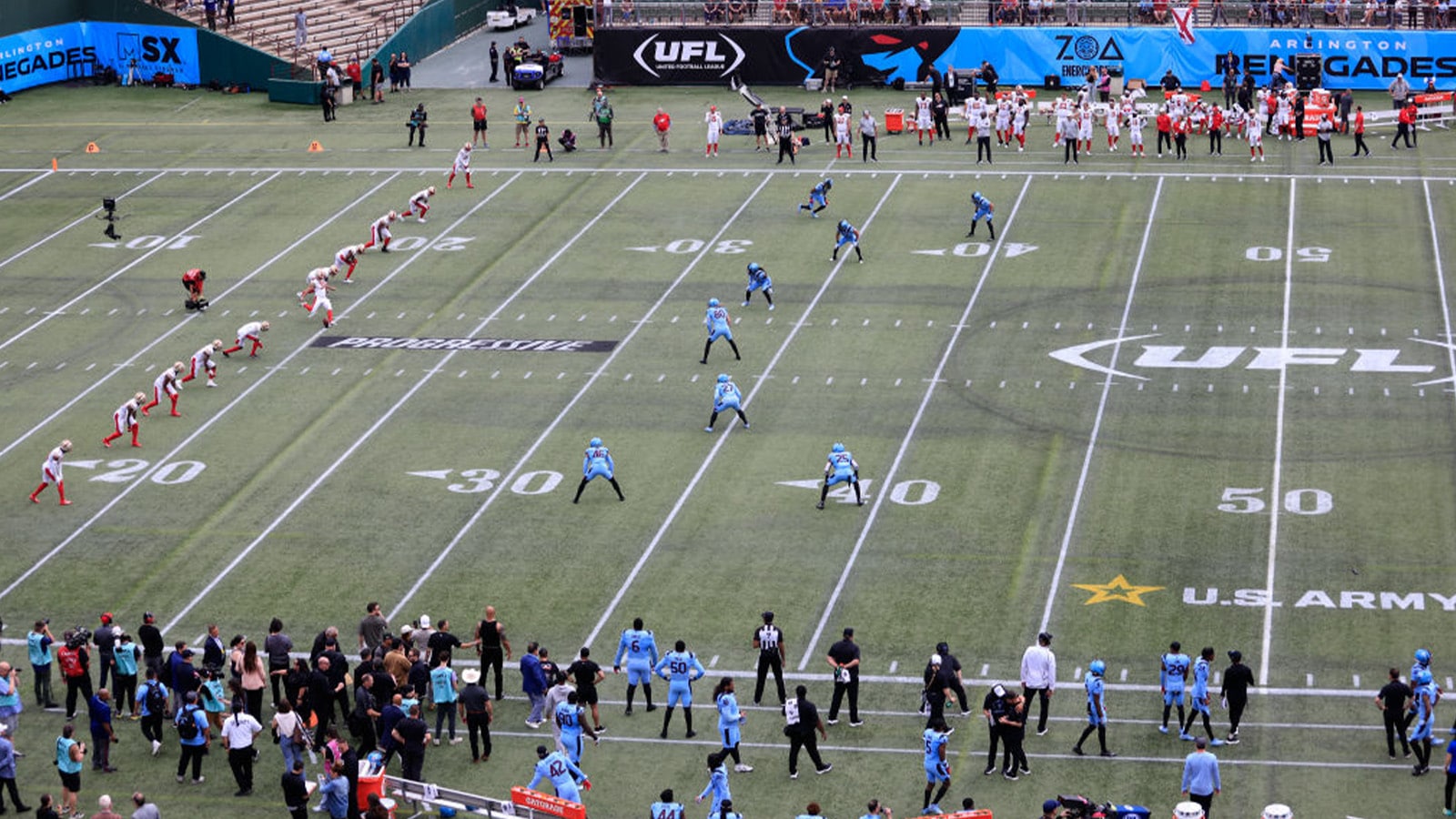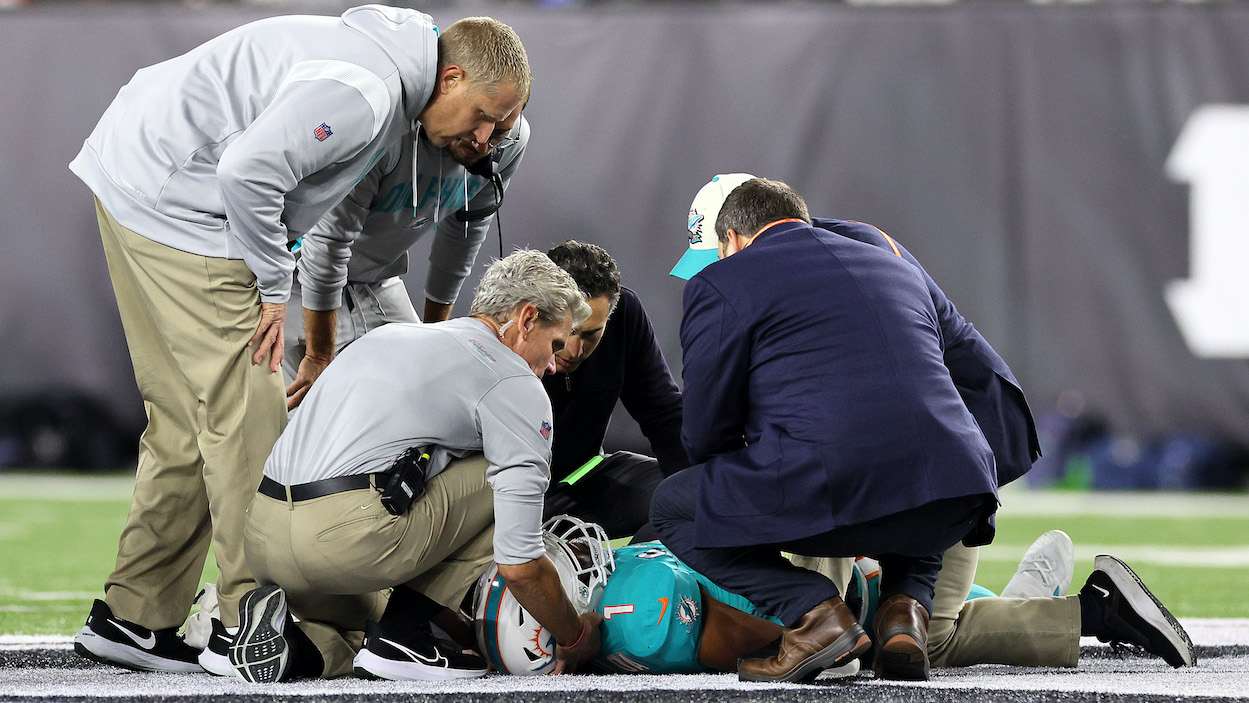
Insider Mike Florio Explains How NFL’s ‘Independent Neurologists’ Aren’t Truly Independent After Tua Tagovailoa Concussion
After the terrifying Tua Tagovailoa concussion on Thursday Night Football, questions are running rampant from NFL fans, players, and media as to how the situation could have happened. Many of the questions center around how doctors allowed the Miami Dolphins quarterback back in the Week 3 game vs. the Buffalo Bills. One of the reasons that happened, NFL insider Mike Florio recently explained on the Dan Patrick Show, is that the “independent neurologists” the NFL uses to evaluate concussions aren’t that independent after all.
Mike Florio explains how the NFL s “Independent Neurologists” work
In 2009, amid lawsuits from a host of former players over the NFL’s handling of concussions over the years, the NFL began revamping its concussion protocols.
One of the problems the league and the NFLPA identified was that team doctors were the ones responsible for determining whether players with potential concussions could return to action in games. This was an obvious conflict of interest as the team doctors’ employers had a vested interest in getting players back on the field as soon as possible.
As a part of this revamping, the league started requiring “independent neurologists,” not paid by the team, on each sideline during games. These doctors now have the final say on whether a player goes back in after possibly suffering a concussion.
The problem is, as Pro Football Talk’s Mike Florio explained on the Dan Patrick Show, that someone has to pay these medical professionals for their time. And that’s where the “independent” label becomes a bit misleading.
While explaining the loophole that allowed Tua Tagovailoa to return to the game in Week 3, Florio said, “the team physician and the independent — although not really independent of the league, independent of the team. They call it the ‘unaffiliated neurotrauma consultant.'”
Later, Florio said he sent questions to the NFL. In those questions, the person he’s most interested in who was involved in the Week 3 Tagovailoa situation is the unaffiliated neurotrauma consultant, aka the independent neurologist.
“Just because this other person isn’t affiliated with the team, they’re still affiliated with the league. And is it really in the league’s best interest to have the best players not available for the best games?” Florio asked Patrick rhetorically. “There’s still a subtle biased there. It’s one step removed from working for the team, but the league still wants the best player out there. … So I’m not so sure this unaffiliated neurotrauma consultant is truly independent.”
“Are we at a point where there needs to be someone who is truly disconnected from the NFL?” Florio continued. “And they’ll hate that. They won’t want it. They want to control everything.”
While the “independent” neurologists are something the league has to look at after the Tagovailoa situation, closing the loophole that let him back in the game last Sunday must change immediately.
How Tua Tagovailoa slipped through the NFL’s concussion protocol loophole
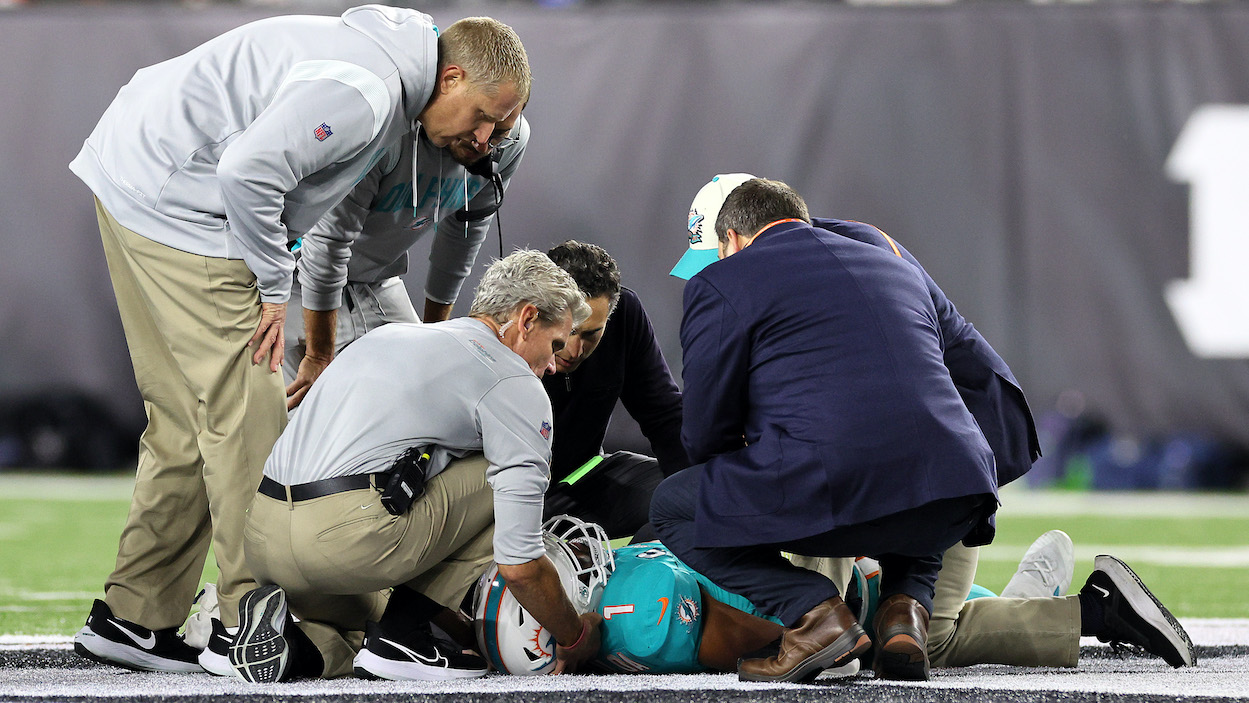
When Tua Tagovailoa hit his head on Thursday vs. the Cincinnati Bengals, one of the things that made the injury so horrific was the unnatural and extreme ways his fingers curled as soon as the Dolphins QB hit his head.
This reaction was likely the “fencing response position,” which the National Library of Medicine defines as “an overt indicator of injury force magnitude and midbrain localization to aid in injury identification and classification” (h/t Yahoo Sports).
The presence of the fencing response position automatically disqualifies a player from returning to the game and puts them in the NFL’s concussion protocol.
Another major sign of a concussion is “gross motor instability.” That’s when a player takes a hit to the head and comes up with wobbly legs or is unable to complete basic motor functions. This is what Tagovailoa demonstrated in Week 3 after hitting his head on the turf vs. the Bills.
However, unlike the automatically disqualifying fencing response position, there is a loophole that lets a player come back after demonstrating gross motor instability.
If the player, the team physician, and the independent neurologist can attribute the gross motor instability to some sort of physical injury, the player can go back in and play.
This is what happened after Tagovailoa’s wobbly leg event in Week 3. The QB attributed his falling down to back spasms. The physician and neurologist accepted that explanation and let the signal-caller play again.
Now, Mike Florio, along with many others, is calling on the NFL to close this loophole immediately.
Like Sportscasting on Facebook. Follow us on Twitter @sportscasting19 and subscribe to our YouTube channel.
